I am a student and my question is about finding the signal flow graph for a simple circuit.

I found the above formula for a \$k\$ node having \$U_k\$ potential. In the book it is said that this is a base for building the signal flow graph using nodes potentials.
\$k\$ is the number of the node,
\$U_k\$ it’s potential,
\$S_k\$ the sum of the admittances from node \$k\$
\$Y_{jk}\$ is the admittance between \$j\$ node having \$U_j\$ potential and \$k\$ node
\$I_{gk}\$ is the algebraic sum of currents in the \$k\$ node (positive sign if he current enters in the node, negative sign if the current exits from the node)
Next , an example for this circuit for which we need to find the transfer function \$H(s)= \frac{U_2(s)}{E(s)}\$:

They write in the book the next linear system:
$$U_1S_1 = GE + GU_2$$
$$U_2S_2 = GU_1 + sCU_3$$
$$U_3S_3 = sCE + sCU_2$$
where:
$$\require {cancel} \cancel{S_1 = 2(sC + G)}$$
$$S_1 = 2G + sC$$
$$S_2 = sC + G$$
$$S_3 = 2(sC + G)$$
\$G\$ is the real part of the admittance \$Y_{jk}\$ or \$G = \frac {1}{R}\$.
From the above equations they find the equation of the potential in each node as:
$$U_1 = \frac{G}{S_1}E + \frac{G}{S_1}U_2$$
$$U_2 = \frac {G}{S_2}U_1 + \frac {sC}{S_2}U_3$$
$$U_3 = \frac{sC}{S_3}E + \frac{sC}{S_3}U_2$$
The resulting signal flow graph is:
If the \$S_k\$ is the sum of the admittances from \$k\$ node, how they calculated \$ S_1 = 2(sC + G) \$
I understand for node 2: \$S_2 = sC + G \$ (because I have one resistor from node 1 to node 2 and one capacitor from node 3 to node 2).
Why for the node 1: \$S_1\$ expression is not \$S_1 = 2G + sC\$? It is wrong in the book?
Later edit: the correct expression for \$S_1\$ is indeed \$S_1 = 2G + sC\$.
Where are the currents from the first formula?
Later edit: that term is equal to zero.
I need to understand because I have to find the signal flow graph for this circuit and based on the graph to find the transfer function using Mason rule:

Hope someone can help me! Thanks in advance!
Best regards, Daniel

